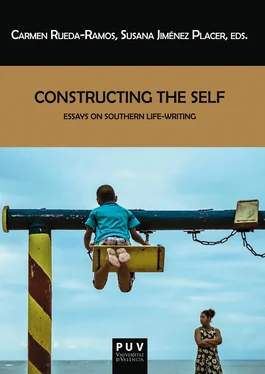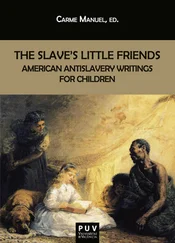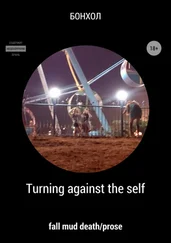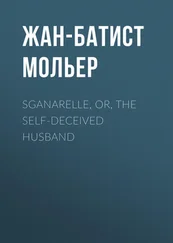---. Metaphors of Self: The Meaning of Autobiography. Princeton: Princeton UP, 1972. Print.
Perreault, Jeanne. “Southern White Women’s Autobiographies: Social Equality and Social Change.” The Southern Literary Journal 41.1 (Fall 2008): 32-51. Print.
Prenshaw, Peggy Whitman. Composing Selves: Southern Women and Autobiography. Baton Rouge: Louisiana State UP, 2011. Print.
Ritterhouse, Jennifer. Growing Up Jim Crow: The Racial Socialization of Black and White Southern Children, 1890-1940. Chapel Hill: U of North Carolina P, 2006. Print.
Rollyson, Carl. “Lillian Hellman.” Encyclopedia of Life-Writing: Autobiographical and Biographical Forms. Ed. Margaretta Jolly. Chicago: Fitzroy Dearborn Publishers, 2001. 421-422. Print.
Settle, Mary Lee. Spanish Recognitions: The Roads to the Present. New York: Norton, 2004. Print.
Simpson, Lewis P. “The Autobiographical Impulse in the South.” Home Ground: Southern Autobiography. Ed. J. Bill Berry. Columbia: U of Missouri P, 1991. 63-84. Print.
---. The Fable of the Southern Writer. Baton Rouge: Louisiana State UP, 1994. Print.
Smith, Lee. Dimestore: A Writer’s Life. Chapel Hill: Algonquin Books, 2016. Print.
Smith, Sidonie. A Poetics of Women’s Autobiography: Marginality and the Fictions of Self-Representation. Bloomington: Indiana UP, 1987. Print.
---. Subjectivity, Identity, and the Body. Bloomington: Indiana UP, 1993. Print.
Smith, Sidonie, and Julia Watson, eds. Before They Could Vote: Autobiographical Writings, 1819-1919. Madison: U of Wisconsin P, 2006. Print.
---. Interfaces: Women, Autobiography, Image, Performance. Ann Arbor: U of Michigan P, 2003. Print.
---. Reading Autobiography: A Guide for Interpreting Life Narratives. Minneapolis: U of Minnesota P, 2001. Print.
---. Women, Autobiography, Theory: A Reader. Madison: The U of Wisconsin P, 1998. Print
Stuart, Christopher, and Stephanie Todd, eds. Essays on Life Writing and the Body. Newcastle: Cambridge Scholars Publishing, 2009. Print.
Sullivan, Walter. The War the Women Lived: Female Voices from the Confederate South. Nashville: J. Sanders Books, 1995. Print.
Wallach, Jennifer Jensen. Closer to Truth Than Any Fact: Memoir, Memory and Jim Crow. Athens: U of Georgia P, 2008. Print.
Watkins, James H. “Contemporary Autobiography and Memoir.” The History of Southern Women’s Literature. Ed. Carolyn Perry and Mary Louise Weaks. Baton Rouge: Louisiana State UP, 2002. 447-454. Print.
---. ed. Southern Selves: From Mark Twain and Eudora Welty to Maya Angelou and Kaye Gibbons. A Collection of Autobiographical Writings. New York: Vintage Books, 1998. Print.
1 In the Introduction to his edited volume, Located Lives: Place and Idea in Southern Autobiography (1990), Bill Berry notes that “James M. Cox would add Franklin’s autobiography to his list of the ten major American prose works” (x).
2 In her essay, “Postmodernism and the Autobiographical Subject: Reconstructing the ‘Other,’” Betty Bergland explains that, because autobiography is a genre that “possess[es] ideological power . . . [and] serves a political function” (131), women and ethnic minorities who have written their life stories and constructed their selves from the position of the other, in fact, have used a “double-voiced discourse” (132).
3 It should be noted, however, that Anne Firor Scott’s 1970 path-breaking book The Plantation Mistress led to the publication of several studies in the 1980s which dealt with the demystification of the role of the southern lady through autobiographical narratives like letters and diaries, although those studies had a sociological and historiographical, rather than literary, perspective.
4 In his recent edited volume On Life-Writing (2015), Zachary Leader defines life-writing as a generic term used to describe a range of “writings [which] include not only memoir, autobiography, biography, diaries, autobiographical fiction, and biographical fiction, but also letters, writs, written anecdotes, depositions, court proceedings . . . marginalia, nonce writings, lyric poems, scientific and historical writings, and digital forms (including blogs, tweets, Facebook entries)” (1).
5 Different scholars have included travel writing as a form of life-writing. See, for example, Timothy Dow Adams’s Light Writing and Life Writing (2000), where he specifies that the term life-writing includes not only “biography, memoir, and diary” but also “journal, letters, personal literary criticism, confession, oral history, daybook, documentary, travel writing, testimonio , film and television autobiographies, performance art, and as-told-to autobiography, as well as poetry” (xi).
6 In “African American Autobiographies,” included in DiBattista and Wittman’s The Cambridge Companion to Autobiography (2014), Trudier Harris discusses Hurston’s Dust Tracks on a Road , James Baldwin’s Notes of a Native Son , and The Autobiography of Malcolm X as examples of African American autobiographical writings in which the impulse is to bear witness to a collective experience.
PART 1
SUBVERSIVE (RE)CREATIONS OF THE SELF—PAST AND PRESENT
‘My Story is Better Than Yours’: The Changing Politics of and Motives for Composing Southern African American Life Narratives
Trudier Harris The University of Alabama
On 29 May 1880, prospective African American writer Charles Waddell Chesnutt, residing in North Carolina at the time, wrote in his diary:
I think I must write a book. I am almost afraid to undertake a book so early and with so little experience in composition. But it has been my cherished dream, and I feel an influence that I cannot resist calling me to the task. . . . If I do write, I shall write for a purpose, a high, holy purpose, and this will inspire me to greater effort. The object of my writings would be not so much the elevation of the colored people as the elevation of the whites—for I consider the unjust spirit of caste which is so insidious as to pervade a whole nation, and so powerful as to subject a whole race and all connected with it to scorn and social ostracism—I consider this a barrier to the moral progress of the American people; and I would be one of the first to head a determined, organized crusade against it. . . . This work is of a twofold character. The negro’s [sic] part is to prepare himself for social recognition and equality; and it is the province of literature to open the way for him to get it—to accustom the public mind to the idea; and while amusing them to lead them on imperceptibly, unconsciously step by step to the desired state of feeling. If I can do anything to further this work, and can see any likelihood of obtaining success in it, I would gladly devote my life to the work. (Brodhead 139, 140)
I quote this passage at length here because it may well have served as the impetus to all of those formerly enslaved African Americans who penned the stories of their lives. They all wrote with a purpose, as Chesnutt avowed, and their compositions were designed to effect the greater good of the African American communities of which they were a part. They were, in other words, conscious activists. Consider Frederick Douglass’s Narrative of the Life of Frederick Douglass (1845), for example. This text, which has become the standard by which all other narrations by those formerly enslaved are judged, was designed to assist in the abolition of slavery. Indeed, Douglass perfected the style in his narrative by lecturing on the abolitionist circuit in New England once he had escaped from slavery in Maryland. Time and again, Douglass told the story of his experiences in slavery. As a result of those repeated tellings, his narrative achieved the polished status for which we praise his published life story.
Читать дальше












